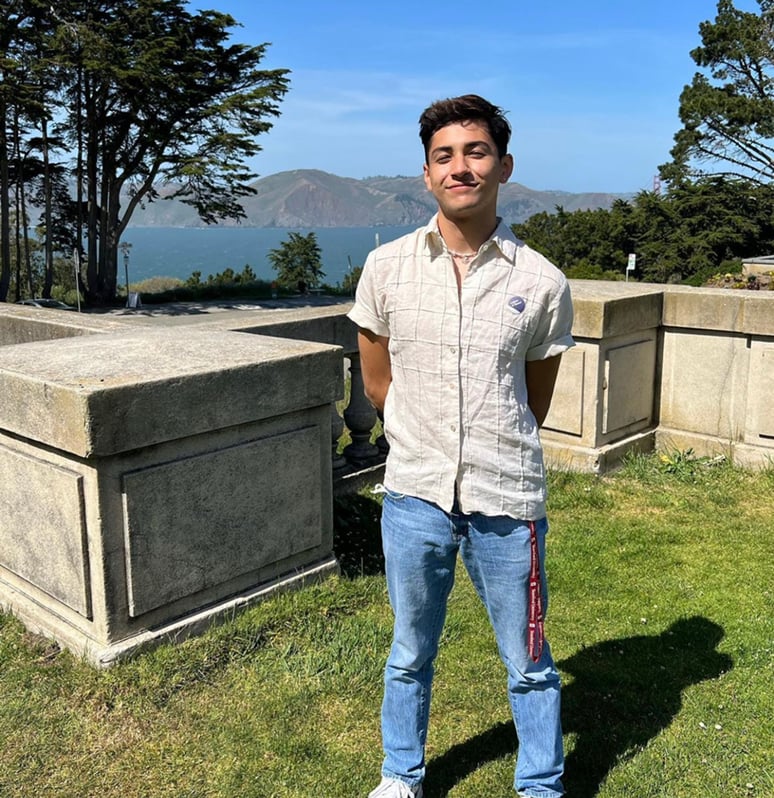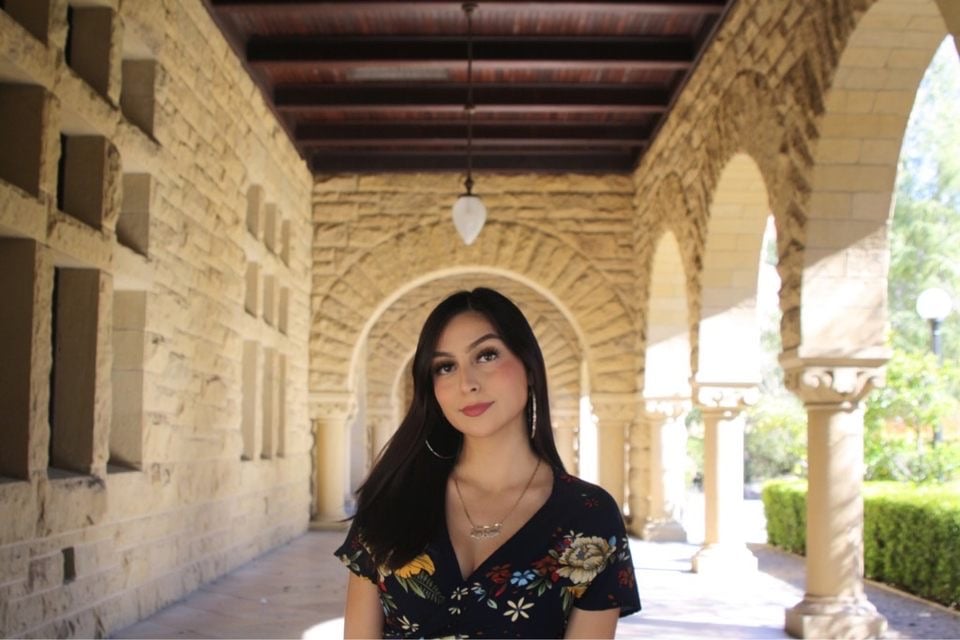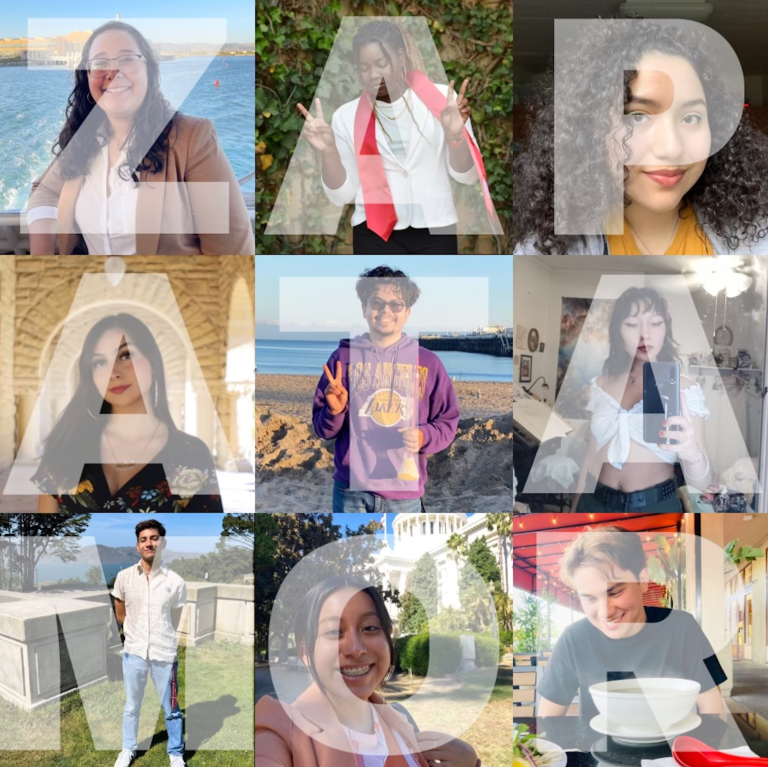Ethnic dorms play a key role in building an inclusive and welcoming community for students of color. Stanford has four ethnic-themed dorms: Casa Zapata, Okada, Ujamaa and Muwekma-Tah-Ruk. All four dorms foster a close community for residents who are often first-generation and/or low-income students.
Casa Zapata, the Chicanx and Latinx ethnic theme dorm at Stanford, is a popular choice for Latinx students who want to live in a residential community celebrating their heritage and culture. The dorm is decorated with murals by renowned Latinx artists such as Juana Alicia and it regularly hosts traditions like Flor y Canto, making students feel right at home. Since its founding in 1972, Casa Zapata has provided love and community to generations of Latinx students.
The Stanford Daily sat down with Casa Zapata staff — Jennifer Martinez ’23, Gema Quetzal ’23 and Hector Angel Rivera ’24 — to learn about their experience with the comunidad (community) at Casa Zapata.
This interview has been lightly edited for clarity.

The Stanford Daily [TSD]: How would you describe Zapata?
Jennifer Martinez [JM]: Zapata is a safe space. It’s really a place where you can hang out with friends, meet new people and learn about new cultures. I’ve lived here for two years now, and it is a space where you can grow with others. It really feels like home. It’s a safe community filled with love, care and support from one another.
TSD: What does it mean to be a “fourth floor resident”?
JM: It’s a name of endearment we give to community members who don’t live in Zapata. We don’t have enough space to include everybody who wants to live in this community. Fourth floors are usually friends of residents, former residents and future residents, and I hope that one day everybody has a chance to live here.
TSD: What do you want people to know about Zapata and its community?
JM: We’re all so diverse. We all come from different communities and backgrounds, both racially and ethnically. There is so much to learn. We have programming every week and it allows for a safe space for you to grow and teach yourself. Just because you don’t live in the house at the moment doesn’t mean you can’t contribute. We can make Zapata bigger somehow. We can always fight for that. All community members are always welcome here.

The Stanford Daily [TSD]: How would you describe Zapata?
Hector Angel Rivera [HAR]: It’s a place on campus for Latine students, those who live in the dorm and those who don’t, who just want to embrace their culture and celebrate who they are. That’s definitely how I explain it to my family members. The key word is “celebration” — celebrating our culture, being surrounded with what’s familiar to us and others who share the same values and backgrounds.
TSD: When did you first get involved with the Zapata community?
HAR: I lived here during my freshman year, when COVID first started, and there were only thirteen of us. I didn’t start to get involved with the community until this year. I knew there were deeper-rooted issues at Stanford and within the Latino community such as Mexican hegemony, anti-blackness and anti-indigeneity, but I wasn’t so aware until being involved now.
TSD: What is your favorite Zapata memory?
HAR: At the recent carne asada (cookout), there was this cute moment when all the frosh were cooking and started screaming “Viva Zapata” (long-live Zapata). Then we started doing the dorm chant and it was such an awesome moment. We’re all excited to be here.
TSD: What do you want people to know about the Zapata community?
HAR: There’s something for everybody here. We welcome everybody. We hope that everybody will come join us. I know it’s not perfect. But right now, it’s what we have. It’s best to work with what we have and make it better.

The Stanford Daily [TSD]: How would you describe Zapata?
Gema Quetzal [GQ]: Zapata is a dorm that was brought about in a time when there were no spaces for people of color. A group of Latinx folks, just like many other communities of color, decided to create an ethnic-themed dorm so people could find community and empower each other to create change.
Our community is big. It goes beyond those who live here. It’s a community that’s about harboring our histories, creating a safe place that allows us to be ourselves, celebrating each other and stimulating change. You don’t have to live here to be a part of it. You just have to be somebody who’s willing to give to the community and also learn from the community.
TSD: What does it mean to be an ETA?
GQ: An ethnic theme associate is somebody who conducts cultural programming related to the dorm. We work with people who applied to be here to facilitate conversation related to things in the Latinx community, whether it be uplifting our cultures or uniting different communities. We are so different. There are Indigenous or Afro-Latinx folks and people from different countries and different histories. Our job as ETA is to create programming to also unpack the issues in our community so we can create something better for all of our futures.
TSD: What do you want people to know about the Zapata community?
GQ: Recent years have shown that Casa Zapata is not big enough, and we need to expand. When it was created, it was a time when the Latine community looked different and the demographic was smaller. Now the community is bigger and we need more investment into our communities. This goes for all ethnic theme dorms.
In our first dorm programming related to race, nation state and Latin America, 80 people came and could not even fit in our lounge. People want to be here. People want to learn and engage in conversation, and that investment is vital for our communities to grow.
